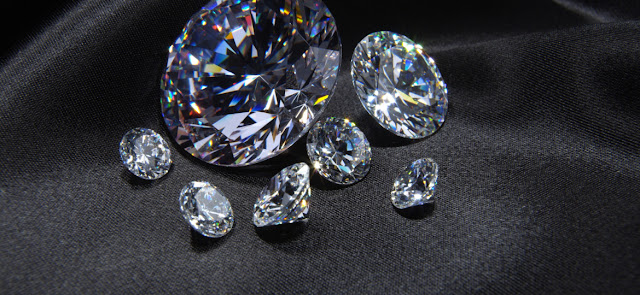The Diamond Girdle of Lab-Grown Diamonds
Lab-grown diamonds, also known as cultured diamonds, are diamonds that have been grown in a laboratory instead of mined from the earth. Many people mistakenly believe that lab-grown diamonds are different than regular diamonds; however, their chemical and physical properties are the same – they are just created in different ways.
Introduction
A diamond girdle is an indicator of diamond quality. The better a stone’s girdle, the higher quality it will be. But what exactly is a diamond girdle? To understand these questions, you first have to know how diamonds are graded using The Four Cs—carat weight, cut, color, and clarity. Once you understand these terms and how they’re applied to grade diamonds (and determine their worth), you can learn about various other factors used in grading—including girdles!
The diamond girdle is a small area around a lab-grown diamond. Most people don’t think about it, but it has serious implications for our health, so we need to take notice. If you’re looking to get a lab-grown diamond, understand why it’s important that you purchase one with a crystal structure (diamond girdle) made out of pure carbon because many sellers use cheap metals like boron carbide to bind their diamonds together. Make sure you know exactly what you’re buying before making your purchase. Choose Lab Grown Diamond Manufacturer.
A Treatise on the Size, Shape, Color, Clarity, and Cut of Lab-Grown Diamonds
If you’re looking to buy a lab-grown diamond, it’s important to understand exactly what it is that you’re getting into. Buying a diamond requires considering factors like size, shape, color, clarity, and cut. That isn’t all though. CVD diamonds are also available in different forms.
Cut
Lab-grown diamonds. Diamonds that are pulled out of a petri dish have been around for quite some time now. So-called lab-grown or cultured diamonds are a man-made, totally synthetic alternative to natural diamonds. These stones can take weeks to produce and cost about 30% less than a mined diamond of comparable size, cut, clarity, color, and carat weight.
Shape
Understanding a diamond’s girdle can help you make an informed decision about what kind of setting to purchase. The girdle, or edge, is one of two parts of a diamond that makes up its rough-cut—the other being pavilion. Unlike a round-cut diamond, which is designed to be as symmetrical as possible throughout its entirety, other shapes such as princess- or marquise-cut diamonds are typically designed to be more balanced on their tips with pointed ends. This shape can sometimes lead to light leakage when not set properly in certain types of settings.
Clarity
In traditional diamond production, sometimes referred to as mined diamonds, a diamond is formed at very high pressure and temperature conditions deep in the earth. In addition to natural inclusions caused by geological events, lab-grown diamonds have only those inclusions formed during their formation process. Clarity simply refers to how clear a stone appears when viewed under 10x magnification. The higher a diamond’s clarity grade (specifically its cut grade), the less visible its imperfections are. This is because our eyes can only see imperfections of 1-2 microns (1/1,000 mm). In contrast, it takes up to 50x magnification for an expert to discern an inclusion on a lab-grown diamond gemstone less than 1 mm in size.
Carat Weight
A diamond’s weight can be expressed in carats. This is an easy way to measure a diamond since it’s determined by dividing its mass by 10. That means that one carat weighs 0.2 grams (or 200 milligrams). The biggest challenge with buying diamonds is knowing how much carat weight you want. Most consumers believe bigger diamonds are always better, but that isn’t true—it all depends on what you plan to do with your diamond after you buy it!
Diamond Grade
Diamonds are graded on a 4-point scale that considers cut, color, and clarity. You’ll often see these referred to as Cut Grade, Color Grade, Clarity Grade, or Carat Weight. In addition to these factors, diamond girdles play an important role in grading diamonds — but what is a diamond girdle? And how do they affect your diamond’s grade? The girdle is the area of a round brilliant diamond that connects its crown (top) with its pavilion (bottom). Grading criteria for diamond girdles include thickness, polish quality, symmetry, and finish. If a gemologist finds any blemishes on a given area of your stone’s girdle during the inspection it can affect your overall grade. Find Best Lab Created Diamond Manufacturer.

